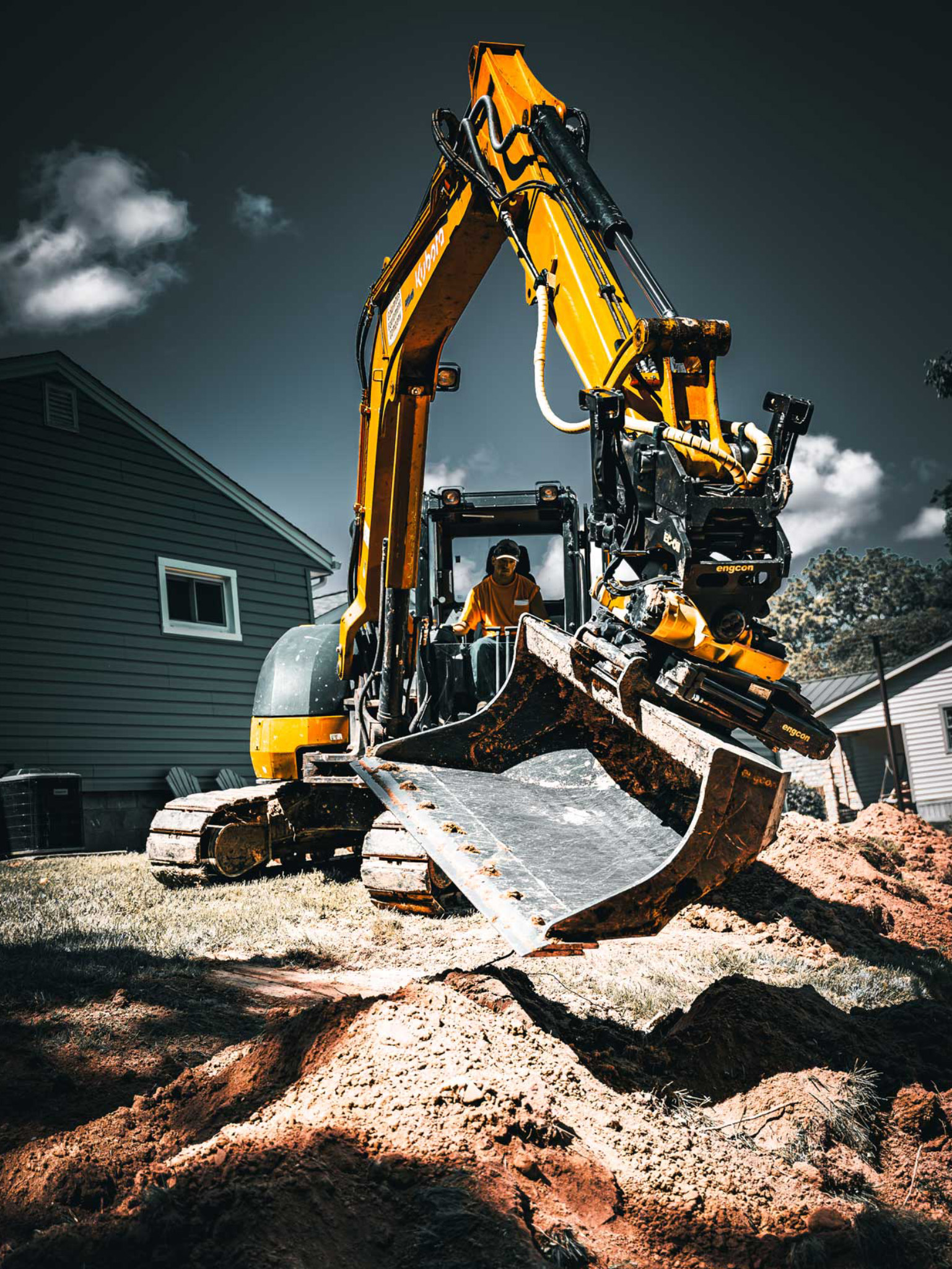Septic Ohio - Comprehensive Septic System Services in Ohio
Septic Ohio - Comprehensive Septic System Services in Ohio
Blog Article
Thorough Expedition: The Scientific Research Behind Superior Excavation Practices
From old hand tools to contemporary hydraulic excavators, the development of excavation methods has actually been a testimony to human resourcefulness and technological advancements. What really sets remarkable excavation methods apart is a deep understanding of geological principles, combined with the use of sophisticated devices and methods.
Development of Excavation Methods
Throughout history, the evolution of excavation techniques has actually played a crucial duty beforehand building and construction methods and historical explorations. From the fundamental tools used by our forefathers to the advanced machinery used in contemporary times, the progression of excavation techniques has significantly changed exactly how we come close to different projects.
In old times, manual work with fundamental tools such as shovels, wheelbarrows, and pickaxes was the key technique of excavation. This labor-intensive process restricted the depth and range of excavations, commonly leading to slow progress and restricted accessibility to particular websites. As civilizations progressed, so did the tools and strategies utilized for excavation.
The Industrial Revolution marked a turning point in excavation methods with the intro of steam-powered equipment. In modern times, technology plays a critical function in excavation, with innovations like General practitioner systems, drones, and 3D scanning boosting precision and effectiveness in the field.
Function of Innovation in Excavation

The combination of advanced modern technology has essentially transformed the field of excavation, improving precision and effectiveness to unmatched levels. One of the essential technological developments that has significantly impacted excavation techniques is the application of general practitioner systems. These systems permit for specific mapping of excavation websites, making it possible for drivers to precisely locate underground energies and frameworks. In addition, making use of telematics in excavation tools has actually enabled real-time surveillance of maker performance, bring about positive maintenance and boosted operational performance.
In addition, the introduction of 3D modeling and simulation software program has streamlined the planning procedure for excavation projects. Operators and engineers can currently picture the whole excavation procedure prior to breaking ground, recognizing prospective difficulties and optimizing operations. Combined with this, the execution of drones in excavation tasks has assisted in airborne surveys, volumetric measurements, and site examinations with unmatched speed and accuracy.
Geological Concepts in Excavation
An understanding of geological concepts is important for making sure the architectural honesty and stability of excavation sites. Geological elements play a vital duty in determining the feasibility and safety of excavation projects (lancaster trenching). One vital geological concept to take into consideration is the sort of dirt or rock existing at the website. Various dirt kinds, such as clay, sand, or crushed rock, have differing degrees of security and need various excavation strategies. Cohesive dirts like clay might need extra support to avoid collapses, while sandy soils might be vulnerable to More about the author disintegration during excavation.
Moreover, the geological structure of the location, consisting of faults, cracks, and rock formations, should be thoroughly assessed to recognize prospective risks and obstacles. Excavating near geological fault or unsteady rock formations can bring about instability and prospective visit this site right here hazards. By performing detailed geological surveys and evaluation, engineers and excavators can establish strategies to mitigate threats and make sure the successful conclusion of excavation jobs. Ultimately, including geological principles right into excavation techniques is vital for attaining secure, effective, and lasting outcomes.

Most Recent Devices for Excavation
In the realm of excavation practices, modern innovations in devices have actually changed the performance and precision of excavation processes. These drones can provide detailed airborne studies of excavation sites, offering real-time information on topography and possible risks.
Another cutting-edge tool getting appeal is the execution of 3D printing innovation for creating custom excavation equipment. This permits the manufacturing of specialized devices that are tailored to the details demands of a project, raising efficiency and reducing downtime.
In addition, improvements in materials scientific research have brought about the advancement of stronger and a lot more resilient excavation devices. lancaster excavation. Tungsten carbide-tipped excavator accessories, for instance, deal superior efficiency in challenging ground conditions, boosting efficiency on-site
Scientific research's Effect on Excavation Practices

Furthermore, advancements in products scientific research have actually resulted in the creation of more powerful, extra long lasting excavation tools and devices. The use of composite products in miners and shovels has actually enhanced their efficiency and durability, ultimately boosting productivity on excavation websites. Furthermore, clinical research study on dirt auto mechanics and geotechnical engineering has provided useful insights right into soil actions, enabling excavation professionals to make educated decisions pertaining to excavation techniques and dirt stablizing methods. Overall, science remains to drive advancement and improvement in excavation methods, making excavation tasks much more reliable, cost-effective, and lasting.

Final Thought
In conclusion, the development of excavation methods has actually been considerably affected by developments in modern technology and a much deeper understanding of geological concepts. The most recent devices and devices utilized in excavation have boosted performance and accuracy in the field. The application of clinical expertise has considerably enhanced excavation techniques, causing extra efficient and sustainable techniques for excavating various kinds of materials.
In the realm of excavation practices, contemporary developments in tools have transformed the efficiency and precision of excavation processes. By leveraging clinical concepts, the excavation sector has actually been able to substantially enhance effectiveness, accuracy, and safety in excavation processes. GPR allows excavation teams to non-invasively check and map subsurface frameworks, energies, and prospective threats, allowing them to intend excavation jobs with better accuracy and minimized danger of crashes.
In addition, clinical research study on soil technicians and geotechnical design has actually offered important insights right into dirt habits, enabling excavation experts to make informed decisions regarding excavation methods and dirt stablizing methods. In general, science continues to drive development and improvement in excavation methods, making excavation jobs more efficient, cost-effective, and sustainable.
Report this page